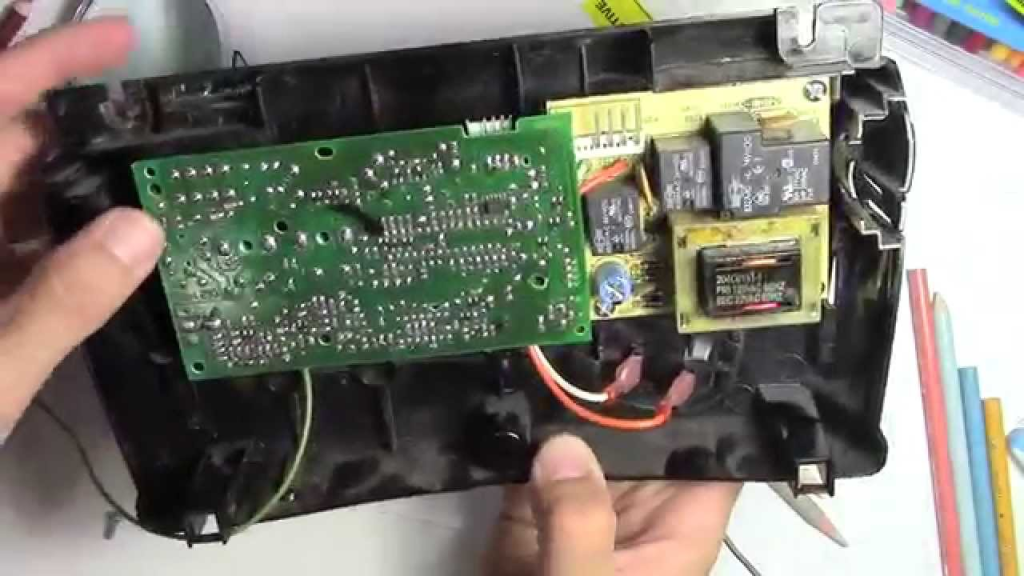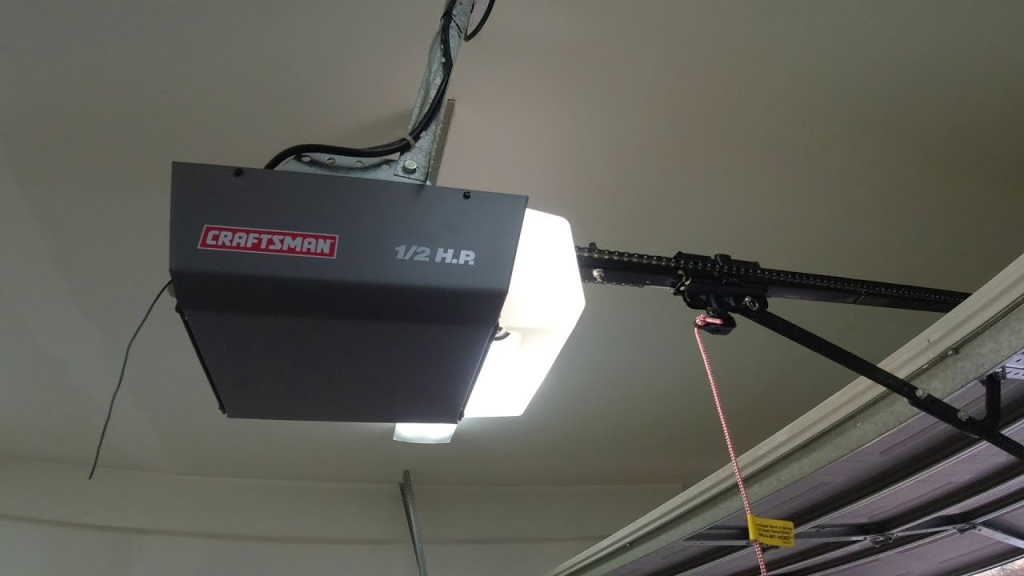Introduction
If you’re experiencing an issue where your Craftsman garage door opener only closes when you hold the button, you’re not alone. This is a common problem that many homeowners face, and while it can be frustrating, it is usually easy to fix.

The most common reason your Craftsman garage door opener has to be held to close is a malfunction in the safety sensor system. These sensors are designed to prevent accidents and injuries, but if they’re misaligned, blocked, or faulty, they can prevent your garage door from closing normally.
In this article, we will discuss why your Craftsman garage door opener requires you to hold the button to close and provide step-by-step troubleshooting tips to fix the problem.
Why Does My Craftsman Garage Door Opener Have To Hold Button To Close?
If your garage door only closes when you press and hold the wall button, it means the system is overriding the safety mechanism. This is a built-in feature designed to bypass sensor-related issues, allowing you to close the door manually when the sensors aren’t functioning properly.
Here are the most common causes of this issue:
- Blocked or Dirty Safety Sensors – Dirt, dust, or objects obstructing the sensor beam can prevent the door from closing.
- Misaligned Sensors – If the sensors are not aligned properly, they may not communicate correctly.
- Faulty or Damaged Sensors – Broken wiring or malfunctioning sensors can trigger safety mode.
- Loose or Disconnected Sensor Wires – A wiring issue could prevent the sensors from working correctly.
- Faulty Logic Board – If the main control board is damaged, it may not receive the correct signals.
Now, let’s go through each of these problems and how to fix them.
Read too: Craftsman Garage Door Opener Troubleshooting Won’t Close: Quick Fixes and Solutions
How to Fix a Craftsman Garage Door Opener That Requires Holding the Button to Close
1. Check for Obstructions or Dirt on Safety Sensors
The safety sensors (also called photo eyes) are small devices located near the bottom of the garage door tracks. They work by sending an invisible infrared beam across the garage door opening. If anything disrupts this beam, the door will not close unless you override it by holding down the button.
How to clean and clear the sensors:
- Look for any objects blocking the sensors (tools, trash cans, spider webs, etc.).
- Wipe the sensor lenses with a clean, dry cloth to remove dirt and debris.
- Make sure there is no direct sunlight or strong lighting interfering with the sensor beam.
2. Check and Adjust Sensor Alignment
If the sensors are misaligned, they won’t be able to send a proper signal to each other, which prevents the garage door from closing.
Steps to align the sensors:
- Locate the sensors – They are positioned on each side of the garage door, about 4-6 inches from the ground.
- Check the LED lights –
- Green light (on one sensor) = sending signal.
- Amber or red light (on the other sensor) = receiving signal.
- If one or both lights are blinking or off, the sensors are misaligned.
- Adjust the sensors – Loosen the mounting brackets slightly and realign them until both lights are solid (not blinking).
- Tighten the brackets to secure the sensors in place.
Once realigned, test the garage door by closing it normally.
3. Inspect the Sensor Wiring for Damage
Faulty or disconnected wires can cause the sensors to malfunction. If your Craftsman garage door opener has to hold the button to close, check for wiring issues.
How to check sensor wiring:
- Follow the wires from the sensors to the garage door opener.
- Look for frayed, cut, or loose wires.
- If you notice any damage, you may need to replace or reconnect the wires.
If you’re comfortable with basic electrical work, you can strip the damaged section of the wire and reconnect it using wire nuts or electrical tape. If the damage is severe, replacing the sensor wiring may be necessary.
4. Test and Replace Faulty Sensors
If cleaning, aligning, and checking the wiring doesn’t work, the sensors themselves may be faulty. Over time, they can wear out or become damaged due to weather conditions or accidental impact.
How to test the sensors:
- Disconnect the sensors from the opener.
- Temporarily connect a new set of sensors (you can borrow working sensors from a friend or buy new ones).
- Test the garage door – if it now closes normally, the old sensors were faulty.
If the sensors are broken, you can purchase compatible Craftsman safety sensors and replace them.
5. Reset the Garage Door Opener
Sometimes, a simple reset can fix sensor-related problems.
How to reset the Craftsman garage door opener:
- Unplug the garage door opener from the power outlet.
- Wait 30 seconds and plug it back in.
- Test the door to see if it closes normally.
This step clears minor system errors and may resolve the problem.
6. Check the Logic Board
If the sensors are working fine but you still have to hold the button to close, the issue might be in the garage door opener’s logic board. This is the main circuit board that controls all functions of the opener.
Signs of a faulty logic board:
- The garage door opener does not respond to remote commands.
- The wall button works, but remotes do not.
- The safety sensors are aligned, but the problem persists.
If you suspect a logic board issue, you may need to replace the circuit board. This is a more advanced repair, so if you’re unsure, it’s best to contact a professional.
When to Call a Professional
If you’ve tried all the above troubleshooting steps and your Craftsman garage door opener still requires you to hold the button to close, it might be time to call a technician.
You should seek professional help if:
- The sensors are aligned, clean, and wired correctly, but the issue persists.
- The logic board shows signs of failure.
- There are electrical or motor issues beyond basic repairs.
A garage door technician can diagnose and fix complex problems that might not be immediately visible.
Preventing Future Issues with Your Craftsman Garage Door Opener
To keep your garage door opener in good working condition, follow these maintenance tips:
- Regularly clean and check the safety sensors to ensure they are free from dirt and debris.
- Test sensor alignment monthly and adjust them if necessary.
- Inspect sensor wiring for signs of wear or damage.
- Lubricate the garage door tracks and rollers to ensure smooth operation.
- Perform a system reset occasionally to clear minor glitches.
By keeping up with maintenance, you can prevent future issues and keep your garage door opener functioning smoothly.
Conclusion
If your Craftsman garage door opener requires you to hold the button to close, the issue is likely with the safety sensors. Blocked, misaligned, or faulty sensors can prevent normal operation, forcing you to override the system.
By following the troubleshooting steps in this guide—cleaning, aligning, checking wiring, testing sensors, and resetting the system—you can often resolve the problem without needing professional repairs.
If these fixes don’t work, consider calling a technician to inspect the logic board or other electrical components. Regular maintenance will also help prevent future issues and keep your garage door opener running smoothly.
Now that you know how to fix a Craftsman garage door opener that only closes when you hold the button, you can confidently troubleshoot and restore proper function!







